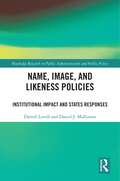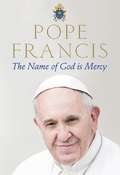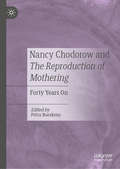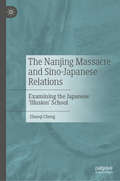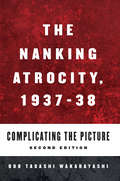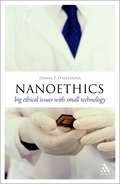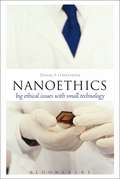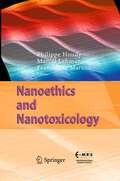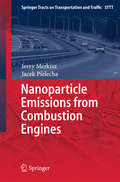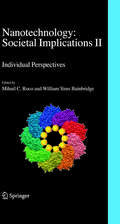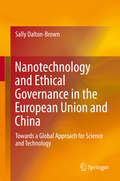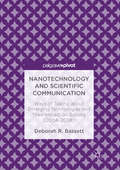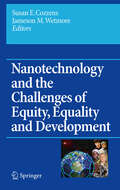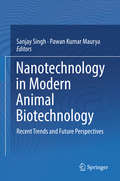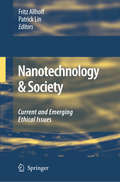- Table View
- List View
The Nagorno-Karabakh Conflict: A Legal Analysis
by Heiko KrügerThe Caucasus region, situated on a natural isthmus between the Black Sea and the Caspian Sea, has long been a border zone and a melting pot for a diverse range of cultures and peoples. As the intersection between Europe and Asia, and also - tween Russia and the Ottoman and Persian Empires, it has featured in the strategic plans of numerous great powers over the centuries. Given its abundance of natural resources, the ready-made raw material transport routes to Europe and its enduring position on the edge of Russia, nothing has changed to the present day. The tremendous development opportunities of the Caucasian region are being tarnished by unresolved territorial conflicts that put a continual and regionally balanced growth, sustained democratisation and long-term stability at risk. These conflicts, which all erupted with the dissolution of the Soviet Union, include the separatist movements in Abkhazia, Chechnya, Nagorno-Karabakh and South - setia. The war over South Ossetia, which erupted between Russia and Georgia in August 2008, spelt out the explosive potential still inherent in these conflicts.
Naked: The Dark Side of Shame and Moral Life
by Krista K. ThomasonWe know shame can be a morally valuable emotion that helps us to realize when we fail to be the kinds of people we aspire to be. We feel shame when we fail to live up to the norms, standards, and ideals that we value as part of a virtuous life. But the lived reality of shame is far more complex and far darker than this -- the gut-level experience of shame that has little to do with failing to reach our ideals. We feel shame viscerally about nudity, sex, our bodies, and weaknesses or flaws that we can't control. Shame can cause self-destructive and violent behavior, and chronic shame can cause painful psychological damage. Is shame a valuable moral emotion, or would we be better off without it? In Naked, Krista K. Thomason takes a hard look at the reality of shame. The experience of it, she argues, involves a tension between identity and self-conception: namely, what causes me shame both overshadows me (my self-conception) and yet is me (my identity). We are liable to feelings of shame because we are not always who we take ourselves to be. Thomason extends her thought-provoking analysis to our current social and political landscape: shaming has increased dramatically because of the proliferation of social media platforms. And although these online shaming practices can be used in harmful ways, they can also root out those who express racist and sexist views, and enable marginalized groups to confront oppression. Is more and continued shaming therefore better, and is there moral promise in using shame in this way? Thomason grapples with these and numerous other questions. Her account of shame makes sense of its good and bad features, its numerous gradations and complexity, and ultimately of its essential place in our moral lives.
Naked: The Dark Side of Shame and Moral Life
by Krista K. ThomasonWe know shame can be a morally valuable emotion that helps us to realize when we fail to be the kinds of people we aspire to be. We feel shame when we fail to live up to the norms, standards, and ideals that we value as part of a virtuous life. But the lived reality of shame is far more complex and far darker than this -- the gut-level experience of shame that has little to do with failing to reach our ideals. We feel shame viscerally about nudity, sex, our bodies, and weaknesses or flaws that we can't control. Shame can cause self-destructive and violent behavior, and chronic shame can cause painful psychological damage. Is shame a valuable moral emotion, or would we be better off without it? In Naked, Krista K. Thomason takes a hard look at the reality of shame. The experience of it, she argues, involves a tension between identity and self-conception: namely, what causes me shame both overshadows me (my self-conception) and yet is me (my identity). We are liable to feelings of shame because we are not always who we take ourselves to be. Thomason extends her thought-provoking analysis to our current social and political landscape: shaming has increased dramatically because of the proliferation of social media platforms. And although these online shaming practices can be used in harmful ways, they can also root out those who express racist and sexist views, and enable marginalized groups to confront oppression. Is more and continued shaming therefore better, and is there moral promise in using shame in this way? Thomason grapples with these and numerous other questions. Her account of shame makes sense of its good and bad features, its numerous gradations and complexity, and ultimately of its essential place in our moral lives.
The Naked Clone: How Cloning Bans Threaten Our Personal Rights
by John Charles KunichBanning therapeutic and reproductive cloning jeopardizes more than cloning itself. The constitutional principles intertwined with cloning embrace such vital liberties as personal autonomy, privacy, reproduction, and freedom of expression. Properly understood, cloning is essentially the same as other forms of assisted reproduction. Procrustean bans on cloning implicate and indirectly threaten numerous key personal interests, including abortion, in vitro fertilization, same-sex adoption, and surrogacy. A government allowed to preemptively isolate and censor medico-scientific research into cloning may be emboldened to shut down other forms of disfavored inquiry and expression as well.Much of the animosity toward cloning is based on unfounded fear, science-fiction fantasy, moralistic bias, and slippery slope predictions, most of which is scientifically untenable or already illegal. Yet when people are cloned, they will in fact be less similar than identical twins; genetics aren't everything. Differing environments produce differing people, and human clones—distinct individuals—will be entitled to the same human rights and legal protections that have protected individuals for centuries. Kunich establishes the pressing need to evaluate cloning in a rational scientific and legal manner, before the extreme opposition sprouting from fear and misunderstanding, which has already led to several state laws, results in an unconstitutional federal ban.
NAMA-Land: The Inside Story of Ireland’s Property Sell-off and The Creation of a New Elite
by Frank ConnollyThe National Asset Management Agency (NAMA) was created in 2009 to contain the spiralling fallout from Ireland’s property crisis. Its job as Ireland’s ‘bad bank’ was to act impartially to get the maximum return from the sale of assets for the Irish people and help pay down the state’s massive debts. Now, after NAMA has presided over the transfer of €70 billion in assets, the Irish economy is once again beginning to recover.But the basic arithmetic of assets valued and assets sold hides a multitude of sins. Beneath NAMA’s veneer of impartiality lies a world built on political patronage and nepotism, rife with conflicts of interest and vulnerable to shocking instances of corruption.Here, and for the first time, bestselling investigative journalist, Frank Connolly, unravels the scandal at the heart of NAMA’s mission. Based on exclusive interviews with a wide range of interested parties, NAMA-land is the shocking story of how the sale of public assets conspired to disinherit the Irish people and enrich a new elite.‘Frank Connolly’s careful and penetrating investigative research has exposed critical truths about malfeasance in high places and the often ugly workings of political power generally, actions that have caused great harm to the general population.’ Noam Chomksy‘Without Frank Connolly we would not know about the scale of corruption that has infected Irish political and business life. He is the best investigative journalist we’ve had in this country.’ Eamon Dunphy
Name, Image, and Likeness Policies: Institutional Impact and States Responses (Routledge Research in Public Administration and Public Policy)
by Darrell Lovell Daniel MallinsonThis book examines the path that name, image, and likeness (NIL) has taken in the first years of the policy, how the expansion has led to differing approaches across state and universities, and how administrators in selected states are dealing with the rulemaking power they have. After an introduction contextualising how NIL policies have impacted the administrative approach at institutions, the remaining chapters focus on how NIL has altered the role of compliance offices and administrators tasked with monitoring academic and financial activity in athletic departments. Chapters leverage theories of policy diffusion and implementation to offer context on the topics from administrative and policy perspectives, whilst also examining how entrepreneurs are both using the policies to advance the status of the athletic arms of their institutions while dealing with these compliance struggles. The authors conclude with a discussion of an unsettled policy landscape and whether stricter guidelines are on the horizon. Name, Image, and Likeness Policies will appeal to both scholars studying sport and law, public policy, public administration, state politics, and governance, as well as readers seeking to better understand what impacts NIL is having on the college system, and students connected to major sports such as college football and basketball.
Name, Image, and Likeness Policies: Institutional Impact and States Responses (Routledge Research in Public Administration and Public Policy)
by Darrell Lovell Daniel MallinsonThis book examines the path that name, image, and likeness (NIL) has taken in the first years of the policy, how the expansion has led to differing approaches across state and universities, and how administrators in selected states are dealing with the rulemaking power they have. After an introduction contextualising how NIL policies have impacted the administrative approach at institutions, the remaining chapters focus on how NIL has altered the role of compliance offices and administrators tasked with monitoring academic and financial activity in athletic departments. Chapters leverage theories of policy diffusion and implementation to offer context on the topics from administrative and policy perspectives, whilst also examining how entrepreneurs are both using the policies to advance the status of the athletic arms of their institutions while dealing with these compliance struggles. The authors conclude with a discussion of an unsettled policy landscape and whether stricter guidelines are on the horizon. Name, Image, and Likeness Policies will appeal to both scholars studying sport and law, public policy, public administration, state politics, and governance, as well as readers seeking to better understand what impacts NIL is having on the college system, and students connected to major sports such as college football and basketball.
The Name of God is Mercy: A Conversation With Andrea Tornielli
by Pope FrancisThe Name of God is Mercy, Pope Francis' exploration on the universal theme of mercy, is a spiritual inspiration to both followers of Christianity and non-Christians around the world.Drawing on his own experience as a priest and shepherd, Pope Francis discusses mercy, a subject of central importance in his religious teaching and testimony, and in addition sums up other ideas – reconciliation, the closeness of God – that comprise the heart of his papacy. Written in conversation with Vatican expert and La Stampa journalist Andrea Tornielli, The Name of God is Mercy is directed at everyone, inside or outside of the Catholic Church, seeking meaning in life, a road to peace and reconciliation, or the healing of physical or spiritual wounds.
Namensrecht: Eine systematische Darstellung des geltenden österreichischen und des geltenden deutschen Rechts (Forschungen aus Staat und Recht #45)
by B. RaschauerSeit mehr als fiinfzig Jahren ist in Osterreich keine UntersudlUng zum Recht des biirgerlichen Namens erschienen. Bereits dieser Umstand rechtfertigt eine systematische Darstellung des geltenden Namens rechts. 1m Rahmen der Untersuchung ergab sich vor aHem die Schwie rigkeit, das auBerst reichhaltige, verstreute und zum Teil unveroffent lichte Material zu ordnen und gleichzeitig der Praxis in der Form eines umfassenden Handbuchs methodisch vertiefte Orientierungshilfen an zubieten. Vberdies greifen Judikatur und Schrifttum in Osterreich immer Mufiger auf deutsche Untersuchungen, insbesondere auf die Kommentare zum BGB, zuriick. Neben dem Mangel an systematischen Untersuchungen zum osterreichischen Namensrecht ist es die Vergleich barkeit der positiv-rechtlichen Regelungen zum biirgerlichen Namen in den beiden Staaten, die zum »Blick iiber die Grenze" einladt. Zu Beginn dieses Jahrhunderts wurden in beiden Staaten vergleichbare Bestimmungen iiber den Namensschutz erlassen. Die 1938 in Osterreich in Geltung gesetzten reichsrechtlichen Vorschriften iiber den Personen stand und iiber die administrative Namensanderung gelten im wesent lichen in beiden Staaten fort. SchlieBlich laden die jiingsten Novellen zu den beiden Biirgerlichen Gesetzbiichern ebenso zum Vergleich ein wie die neuesten Tendenzen in der Entwicklung des namensrechtlichen Kollisionsrechts. Dies ermoglicht in besonders fruchtbarer Weise eine an den Beson derheiten des Gegenstands orientierte Rechtsvergleichung, wie sie am Max-Planck-Institut fur auslandisches offentliches Recht und Volker recht in Heidelberg gepflegt wird. 1ch mochte daher auch an dieser Stelle meinen Lehrern an diesem 1nstitut, Univ. -Prof. DDr. HERMANN MOSLER und Univ. -Prof. Dr. RUDOLF BERNHARDT, fUr die Ausbildung unddie vielfaltigen Anregungen in der offentlich-rechtlichen Rechts vergleichung danken.
Nancy Chodorow and The Reproduction of Mothering: Forty Years On
by Petra BueskensThis book analyzes Nancy Chodorow’s canonical book The Reproduction of Mothering, bringing together an original essay from Nancy Chodorow and a host of outstanding international scholars—including Rosemary Balsam, Adrienne Harris, Elizabeth Abel, Madelon Sprengnether, Ilene Philipson, Meg Jay, Daphne de Marneffe, Alison Stone and Petra Bueskens—in a mix of memoir, festschrift, reflection, critical analysis and new directions in Chodorowian scholarship. In the 40 years since its publication, The Reproduction of Mothering has had a profound impact on scholarship across many disciplines including sociology, psychoanalysis, psychology, ethics, literary criticism and women’s and gender studies. Organized as a “reproduction of mothering scholarship”, this volume adopts a generationally differentiated structure weaving personal, political and scholarly essays. This book will be of interest to scholars across the social sciences and humanities. It will bring Nancy Chodorow and her canonical work to a new generation showcasing classic and contemporary Chodorowian scholarship.
The Nanjing Massacre and Sino-Japanese Relations: Examining the Japanese 'Illusion' School
by Zhaoqi ChengBased on extensive research on the International Military Tribunal for the Far East, this book closely examines the claims and controversy surrounding the ‘Nanjing Massacre’, a period of murder in 1937-1938 committed by Japanese troops against the residents of Nanjing (Nanking), after the capture of the then capital of the Republic of China, during the Second Sino-Japanese War. Focusing on weighing up arguments denying Nanjing Massacre, this book considers the Japanese ‘Illusion’ school of thought which contests the truth of the Nanjing Massacre claims, including the death toll and the scale of the violence. The Nanjing Massacre remains a controversial issue in Sino-Japanese relations, despite the normalization of bilateral relations, and this book goes to great lengths to examine the events through comparative narratives, investigating different perspectives and contributings to the debate from the extensive research of the Tokyo Trial Research Centre at Shanghai, as well as volumes of Chinese and Japanese historical documents.
The Nanking Atrocity, 1937-1938: Complicating the Picture
by Bob Tadashi WakabayashiFirst published in 2007, The Nanking Atrocity remains an essential resource for understanding the massacre committed by Japanese soldiers in Nanking, China during the winter of 1937-38. Through a series of deeply considered and empirically rigorous essays, it provides a far more complex and nuanced perspective than that found in works like Iris Chang’s bestselling The Rape of Nanking. It systematically reveals the flaws and exaggerations in Chang’s book while deflating the self-exculpatory narratives that persist in Japan even today. This second edition includes an extensive new introduction by the editor reflecting on the historiographical developments of the last decade, in advance of the 80th anniversary of the massacre.
nano: Chancen und Risiken aktueller Technologien
by Andre Gaszo Sabine Greßler Fritz SchiemerNanotechnologie gilt als Schlüsseltechnologie des 21. Jahrhunderts mit enormem wirtschaftlichem Potenzial und unbegrenzten Möglichkeiten. Viele Produkte sind bereits im Handel: Reinigungs- und Nahrungsergänzungsmittel, Kosmetika, Sportgeräte. Bisher ist nicht viel über mögliche unerwünschte Wirkungen von Nanopartikeln bekannt. Namhafte Autoren verschiedener Disziplinen geben hierzu den umfassenden Überblick zum aktuellen Stand der Forschung, zu Chancen und Risiken. Physikalisch-chemische Grundlagen, Ethik, Risikokommunikation, Umweltschutz, Gesundheit, Regulations- und Forschungsbedarf sowie wirtschaftliche und gesellschaftliche Aspekte.
Nanoethics: Big Ethical Issues with Small Technology (Think Now)
by Donal P. O'MathunaNanotechnology manipulates matter at the atomic level. It leads to innovative processes and products that are revolutionizing many areas of modern life. Huge amounts of public funds are being invested in the science, yet the public has little understanding of the technology or its ethical implications. Indeed, the ethical, social, and political dimensions of nanotechnology are only beginning to receive the attention they require - outside of science fiction contexts. Surveillance devices may become so small that they are practically invisible to the naked eye, raising concerns about privacy. Nanomedicine may lead to the development of new diagnostic and therapeutic devices, yet anxieties have been raised about the impact of "nanobots" circulating in our bodies. Military applications, or misuses, of nanotechnology raise other concerns. This book explores in an accessible and informative way how nanotechnology is likely to impact the lives of ordinary people in the coming years and why ethical reflection on nanotechnology is needed now.
Nanoethics: Big Ethical Issues with Small Technology (Think Now)
by Donal P. O'MathunaNanotechnology manipulates matter at the atomic level. It leads to innovative processes and products that are revolutionizing many areas of modern life. Huge amounts of public funds are being invested in the science, yet the public has little understanding of the technology or its ethical implications. Indeed, the ethical, social, and political dimensions of nanotechnology are only beginning to receive the attention they require - outside of science fiction contexts. Surveillance devices may become so small that they are practically invisible to the naked eye, raising concerns about privacy. Nanomedicine may lead to the development of new diagnostic and therapeutic devices, yet anxieties have been raised about the impact of "nanobots" circulating in our bodies. Military applications, or misuses, of nanotechnology raise other concerns. This book explores in an accessible and informative way how nanotechnology is likely to impact the lives of ordinary people in the coming years and why ethical reflection on nanotechnology is needed now.
Nanoethics and Nanotoxicology
by Philippe Houdy Marcel Lahmani Francelyne MaranoNanobiotechnology is a fast developing field of research and application in many domains such as in medicine, pharmacy, cosmetics and agro-industry. The book addresses the lastest fundamental results on nanotoxicology and nanoethics, and the enormous range of potential applications in the fields of medical diagnostics, nanomedicine, and food and water administration. Nanoscale objects have properties leading to specific kinds of behaviour, sometimes exacerbating their chemical reactivity, physical behaviour, or potential to penetrate deeply within living organisms. Hence it is important to ensure the responsible and safe development of nanomaterials and nanotechnologies. This fourth volume in the Nanoscience series should make its mark, by presenting the state of the art in the fields of nanotoxicology and nanoethics. This is the first book to combine both scientific knowledge and ethical and social recommendations. It also presents specific policies on nanotechnologies set up by national and international authorities. This book is of interest to engineers, researchers, and graduate students.
Nanoparticle Emissions From Combustion Engines (Springer Tracts on Transportation and Traffic #8)
by Jerzy Merkisz Jacek PielechaThis book focuses on particulate matter emissions produced by vehicles with combustion engines. It describes the physicochemical properties of the particulate matter, the mechanisms of its formation and its environmental impacts (including those on human beings). It discusses methods for measuring particulate mass and number, including the state-of-the-art in Portable Emission Measurement System (PEMS) equipment for measuring the exhaust emissions of both light and heavy-duty vehicles and buses under actual operating conditions. The book presents the authors’ latest investigations into the relations between particulate emission (mass and number) and engine operating parameters, as well as their new findings obtained through road tests performed on various types of vehicles, including those using diesel particulate filter regeneration. The book, which addresses the needs of academics and professionals alike, also discusses relevant European regulations on particulate emissions and highlights selected methods aimed at the reduction of particulate emissions from automobiles.
Nanotechnology: I: Maximising Benefits for Humanity; II: Individual Perspectives
by William S. BainbridgeAdvances in nanoscience and nanotechnology promise great technical breakthroughs in the coming decades. In this book, leading scientists, engineers, and social scientists review the possible uses of these impending technical developments in various industrial, medical, and national security applications. They also examine the corresponding ethical, legal, social, economic, and educational issues that these developments raise.
Nanotechnology and Ethical Governance in the European Union and China: Towards a Global Approach for Science and Technology
by Sally Dalton-BrownThis book addresses questions surrounding the feasibility of a global approach to ethical governance of science and technology. The emergence and rapid spread of nanotechnology offers a test case for how the world might act when confronted with a technology that could transform the global economy and provide solutions to issues such as pollution, while potentially creating new environmental and health risks. The author compares ethical issues identified by stakeholders in China and the EU about the rapid introduction of this potentially transformative technology – a fitting framework for an exploration of global agency.The study explores the discourse ethics and participatory Technology Assessment (pTA) inspired by the work of Jürgen Habermas to argue that different views can be universally recognized and agreed upon, perhaps within an ideal global community of communication. The book offers a developed discourse model, utilizing virtue ethics as well as the work of Taylor, Beck, Korsgaard and others on identity formation, as a way forward in the context of global ethics. The author seeks to develop new vocabularies of comparison, to discover shared aspects of identity and to achieve, hopefully, an ‘intercultural personhood’ that may lead to a global ethics.The book offers a useful guide for researchers on methods for advancing societal understanding of science and technology. The author addresses a broad audience, from philosophers, ethicists and scientists, to the interested general reader. For the layperson, one chapter surveys nanoissues as depicted in fiction and another offers a view of how an ordinary citizen can act as a global agent of change in ethics.
Nanotechnology and Scientific Communication: Ways of Talking about Emerging Technologies and Their Impact on Society (2004-2008)
by Deborah R. BassettThis study examines findings from a 4-year-long ethnography of communication among a research university’s community of scientists and engineers working in nanoscience and nanotechnology. It includes analysis of 20 in-depth interviews with scientists and engineers from 18 different disciplines self-identified as working in nanoscale science and engineering. Using multiple methods of inquiry, including fieldwork, interviews, and textual analysis, elements of a shared speech code are presented, each of which indicate culturally distinctive understandings of psychology, sociology and rhetoric. In particular, the interview data addresses questions such as “What kind of person is a scientist?” “What is the role of science in society?” and “What is the role of communication in science?” This book will appeal to readers interested in science and society, scientific communication, and ethnography of communication.
Nanotechnology and the Challenges of Equity, Equality and Development (Yearbook of Nanotechnology in Society #2)
by Susan E. Cozzens and Jameson WetmoreNanotechnology is enabling applications in materials, microelectronics, health, and agriculture, which are projected to create the next big shift in production, comparable to the industrial revolution. Such major shifts always co-evolve with social relationships. This book focuses on how nanotechnologies might affect equity/equality in global society. Nanotechnologies are likely to open gaps by gender, ethnicity, race, and ability status, as well as between developed and developing countries, unless steps are taken now to create a different outcome. Organizations need to change their practices, and cultural ideas must be broadened if currently disadvantaged groups are to have a more equal position in nano-society rather than a more disadvantaged one. Economic structures are likely to shift in the nano-revolution, requiring policymakers and participatory processes to invent new institutions for social welfare, better suited to the new economic order than those of the past.
Nanotechnology for Environmental Management
"Nanotechnology for Environmental Management" is your gateway to the latest advancements in environmental science and technology. Edited by leading international scientists, this book delves into the diverse approaches and applications of nanomaterials and nanotechnologies, offering insights into their potential for environmental remediation, energy management, and sustainable development. Each chapter showcases cutting-edge innovations, making this book an essential reference for students, researchers, scientists, technicians, and professionals in environmental management and regulation.Explore the promises and challenges of nanotechnology in addressing environmental issues, and gain valuable perspectives on the future of sustainable development. With its thorough examination of state-of-the-art nanotechnological solutions, "Nanotechnology for Environmental Management" is your indispensable guide to navigating the complexities of environmental science and technology.
Nanotechnology in Modern Animal Biotechnology: Recent Trends and Future Perspectives
by Sanjay Singh Pawan Kumar MauryaThe book introduces the basic concepts of nanotechnology and the various technologies to characterize nanomaterials. It also covers the nanostructural features of mammalian cells/tissues and related nanomechanical properties. In addition, the book comprehensively describes the current state-of-the-art and future perspectives of nanotechnology in biosensors. It also discusses the potential of nanotechnology for delivering the diverse cancer therapeutics and illustrates its limitation due to the potential toxicity associated with oxidative stress. It also highlights the ethical issues and translational aspects related to nanotechnology. Finally, it summarizes the applications of nanotechnology in animal biotechnology, the recent perspectives and future challenges of nanomedicines. The content of the book are beneficial for the undergraduate, postgraduate and doctoral students as well the professionals working in the area of nanotechnology and nanomedicines.
Nanotechnology Law: The Next Fifty Years
by Albert Jan Van Den BergIn June 2011 the International Council for Commercial Arbitration (ICCA) marked its fiftieth anniversary with a celebratory conference in Geneva, the birthplace of ICCA. This volume, ICCA Congress Series no. 16, comprises the proceedings of the conference, in which eminent arbitration scholars and practitioners assess the current state of arbitration – both international commercial arbitration and international investment arbitration – and what the future holds for arbitration and for ICCA.
Nanotechnology & Society: Current and Emerging Ethical Issues
by Patrick Lin Fritz AllhoffNanotechnology & Society is a collection of sixteen papers focused on the most urgent issues arising from nanotechnology today and in the near future. Written by leading researchers, policy experts, and nanoethics scholars worldwide, the book is divided into five units: foundational issues; risk and regulation; industry and policy; the human condition; and selected global issues. The essays tackle such contentious issues as environmental impact, health dangers, medical benefits, intellectual property, professional code of ethics, privacy, international governance, and more.




